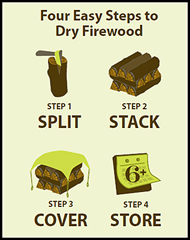Open Burning on SRA land Opens November 26, 2025
The Kern County Fire Department announced open burning of hazard reduction fuels on SRA land begins November 26, 2025.
Be advised: Hazard reduction open burning requires a burn burmit. You can obtain a burn permit by Clicking Here, or from the link on the hazard reduction pile burning permit application widget on the home page sidebar.
Instructions for obtaining an Open Burn Permit
Permits for fire hazard reduction and tumbleweed pile burning can be obtained online through Community Connect. Community Connect can be accessed by clicking the link below, or through the Hazard Reduction Pile Burning Permit Application widget in the sidebar of the Home Page. Instruction for obtaining a burn permit can be found by clicking the link below.
Hazard Reduction Burn Permit Instructions
Link for obtaining Hazard Reduction Burn Permit
Agricultural Crop Waste, Hazard Reduction & Noxious Weed Burning
Commercial Agricultural operations must obtain and maintain an annual Crop Waste, Hazard Reduction & Noxious Weed Burning permit from the District.
Click here to download a copy of the Application for Agricultural Burning.
Please be advised: You must check burn-day status on the day you wish to burn, prior to ignition. To do so, please look at the “status” of the permit in the burn permit tile. If the status says “Active”, burning is allowed for that day; if the status says “Suspended - Burn Ban”, then burning is not allowed on that day.
Click Here for Burn Day Forecast
Eastern Kern Fire Stations |
Station Number |
Address |
Telephone Number |
11 Keene |
30356 Woodford-Tehachapi Rd. 93561 |
(661) 822-5555 |
12 Tehachapi |
800 South Curry St. 93561 |
(661) 822-5533 |
14 Mojave |
1953 Hwy 58 93501 |
(661) 824-4581 |
15 Rosamond |
3219 35th St. West 93560 |
(661) 256-2401 |
16 Bear Valley Springs |
28946 Bear Valley Rd. 93561 |
(661) 821-1110 |
87 Boron |
26965 Cote St. 93516 |
(760) 762-6167 |
18 Stallion Springs |
28381 Braeburn Pl. 93561 |
(661)822-3980 |
71 South Lake |
9000 Navajo Ave. 93283 |
(760) 378-3055 |
72 Lake Isabella |
4500 Lake Isabella Blvd. 93240 |
(760) 379-2626 |
83 Inyokern |
6919 Monache Mt. Ave. 93527 |
(760) 377-4621 |
84 Ridgecrest |
139 E. Las Flores 93555 |
(760) 375-8466 |
85 Randsburg |
26804 Butte Ave. 93554 |
(760) 374-2455 |
76 Kernville |
11018 Kernville Rd. 93238 |
(760) 376-2219 |
81 Ridgecrest Heights |
815 W. Dolphin Ave. 9555 |
(760) 371-2181 |
78 Piute |
16001 Walker Basin Rd. 93518 |
(661) 867-2311 |
190 California City |
20890 Hacienda Bvld. 93505 |
(760) 373-4841 |
Current Wild Fire/Smoke info is available at the links below
InciWeb Incident Information (Click Here)
Cal Fire (Click Here)
American Red Cross Safe and Well (Click Here)
How Smoke Can Effect Your Health
Smoke is made up of a complex mixture of gases and fine particles produced when wood and other organic matter burns. The biggest health threat from smoke comes from fine particles. These microscopic particles can get into your eyes and respiratory system, where they can cause health problems such as burning eyes, runny nose, and illnesses such as bronchitis. Fine particles also can aggravate chronic heart and lung diseases – and even are linked to premature deaths in people with these conditions.
People with asthma, heart disease, lung disease, older adults, and children are at greater risk of being affected by smoke. If you are healthy, you're usually not at a major risk from smoke but it's still a good idea to avoid breathing smoke if you can help it. It's important to limit your exposure to smoke, especially if you may be susceptible.
How to tell if smoke is affecting you:
Smoke can irritate the eyes and airways, causing coughing, a scratchy throat, irritated sinuses, headaches, stinging eyes or a runny nose. If you have heart or lung disease, smoke might make your symptoms worse. People with heart disease might experience chest pain, palpitations, shortness of breath, or fatigue. People with lung disease may not be able to breathe as deeply or as vigorously as usual, and they may experience symptoms such as coughing, phlegm, chest discomfort, wheezing and shortness of breath. When smoke levels are high enough, even healthy people may experience some of these symptoms.
Protect yourself:
Watch local news and weather stations, pay attention to health warning and air quality reports, you can also use the EPA's Air Quality Index (AQI). Use common sense; if it looks smoky outside, it's probably not a good time to mow the lawn, go for a run, or let children play outside.
If your advised to stay indoors take steps to keep indoor air as clean as possible. Keep windows and doors closed. Run an air conditioner if needed but make the fresh air intake is closed and the filter is clean. Do not use a swamp cooler as it will pull in lots of smoke from outside. If your house becomes to hot to be comfortable seek alternative shelter. If it is cool outside try to avoid anything that produces heat from burning such as a fireplace, gas logs, or a gas stove.
Click here for more information
 Residential Wood Burning Residential Wood Burning
Many Eastern Kern County residents
use woodstoves and fireplaces to heat
their homes.
If you burn please remember to do so
as cleanly as possible.
Never burn household waste in your
woodstove or fireplace and only burn
clean, dry, seasoned wood, and maintain
a hot fire. |
